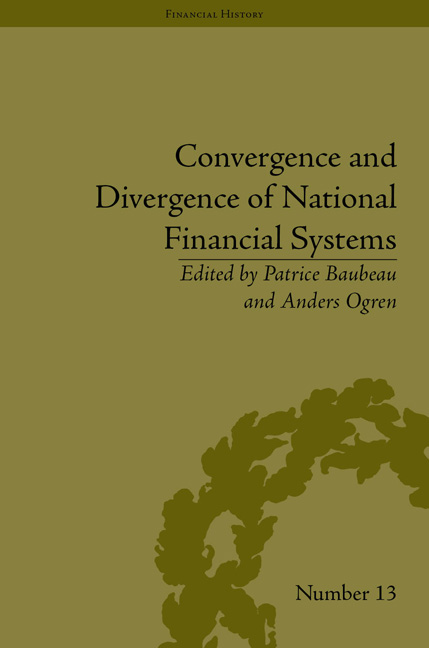 Convergence and Divergence of National Financial Systems
Convergence and Divergence of National Financial Systems Book contents
- Frontmatter
- CONTENTS
- Acknowledgements
- List of Figures
- Introduction
- Part I The Social Mechanisms of Financial Convergence
- 1 Organizations of National Financial Markets and Convergence of Practices: Institutions and Networks of Parisian Brokers in Nineteenth-Century Parisian Financial Markets
- 2 The Resistance of the Lille Marketplace to National Convergence: A Regional Financial System between Autonomy and Sclerosis, 1880–1914
- 3 Competition amongst the French Stock Exchanges during the Second World War
- Part II National Convergences and Divergences in the Long Term
- Part III Convergence and Historical Shocks
- Part IV Convergence and Monetary Constraint
- Notes
- Works Cited
- Index
3 - Competition amongst the French Stock Exchanges during the Second World War
from Part I - The Social Mechanisms of Financial Convergence
- Frontmatter
- CONTENTS
- Acknowledgements
- List of Figures
- Introduction
- Part I The Social Mechanisms of Financial Convergence
- 1 Organizations of National Financial Markets and Convergence of Practices: Institutions and Networks of Parisian Brokers in Nineteenth-Century Parisian Financial Markets
- 2 The Resistance of the Lille Marketplace to National Convergence: A Regional Financial System between Autonomy and Sclerosis, 1880–1914
- 3 Competition amongst the French Stock Exchanges during the Second World War
- Part II National Convergences and Divergences in the Long Term
- Part III Convergence and Historical Shocks
- Part IV Convergence and Monetary Constraint
- Notes
- Works Cited
- Index
Summary
Introduction
Relationships between stock exchanges have gained a renewed interest in view of both the mergers (and merger attempts) of the last two decades, and the Mifid Directive in the European Union framework. According to theory the economies of scope and scale, as well as the positive externalities, should push towards concentration of both trading and listing in a unique exchange, which amounts to a form of institutional convergence. In practice however, several stock exchanges coexist and there thus seems to be a ‘network externalities puzzle’: why isn't there just one market? Several explanations have been suggested to address this puzzle. Informational frictions could stop concentration because traders in a distant exchange cannot obtain (low-cost) information about issuers located near the rival exchange. Within this framework, informational frictions are a decreasing function of both improving information technologies and the growing size of the issuers. Moreover, organizational heterogeneity could explain the resilience of a multi-polar stock-exchange industry. According to this literature, traders and issuers choose the venues matching their heterogeneous preferences. In an integrated zone, similar exchanges should however be viewed as a waste of resources.
The modern literature is usually unaware of historical episodes of competition. Even though stock exchanges did not face as much competition in the past as nowadays, historical evidence suggests that competition has existed for a long time. One question is whether competition implies convergence, either on norms or on efficiency, as many theories state. For example, the French and German stock exchanges were competing to float Russian bonds in the 1880's. In France, Hautcoeur and Riva explore the ‘coopetitive’ dynamics between the Coulisse (the Curn of Paris) and the Parquet (the official market) during the nineteenth century. For the US, Brown et al. show that between 1885 and 1925 the Consolidated Exchange was a major actor, at some times beating the NYSE in terms of volume of trades. Eventually, White explores the competition between the NYSE and the Consolidated and regional exchanges for the period 1900–33.
- Type
- Chapter
- Information
- Convergence and Divergence of National Financial SystemsEvidence from the Gold Standards, 1871–1971, pp. 51 - 68Publisher: Pickering & ChattoFirst published in: 2014


